Sakura in Bloom, Spring Still in Waiting
Letters from Japan, March 2025: A three-day sakura trip to Kyoto and a perpetually delayed spring.
Good evening,
Spring is in full swing here in Japan, with the peak of the sakura already behind us in Tokyo and just about to end in Kyoto, where I’ve just returned from. In true Tokyo fashion, sakura brought mostly rain and unseasonable cold. But at the very tail end of full bloom, the sun finally appeared, elevating the joy of Tokyoites, who greet this fleeting season each year with the same explosive excitement, as if for the first time. Experiencing the city's mood shift and witnessing that joy always melts my heart—even more than the blossoms.
Until this year, I had always kept a bit of distance from the sakura season, mainly to avoid getting hurt. Its fleeting nature, with peak bloom lasting only four to five days, a high chance of uncooperative skies, and increasingly unpredictable bloom dates, makes the season, a symbol of hope, renewal, new beginnings, and, more importantly, the transient nature of life, somewhat ironically, a perfect recipe for disappointment if you plan your travels around it.
And this spring, like many other Turks, I already had much bigger reasons for disappointment than the delicate, beautiful, yet reliably unreliable sakura. Well, perhaps “disappointment” isn’t the right word after 22 years; a steadily deepening grief would be more accurate. A grief that deepens year after year, now seemingly reaching its peak with recent events (imprisonment of the current president`s strongest rival and twice elected mayor of Istanbul) that may either drag our country, where spring is perpetually delayed, even further into darkness, or finally bring an end to two decades of systematic assaults on democracy and secularism.
The only reason we can still talk about hope in this grim situation is the admirable efforts of the youth (with Pikachu among them), who bring not only determination and fearlessness, but also their ever-admirable sense of humour, lifting the country’s spirits, against all odds, in the face of an authority that has deprived them of hope for their future.
My grief, as someone who chose and had the opportunity to live outside her own country, partially muting the emotional weight of life under an increasingly authoritarian government in her day-to-day reality, is somewhat of a disenfranchised and unearned one. Still, despite recognizing the naivety of my wish in today’s global political climate, I sincerely hope you are forever spared from the pain of watching your country descend into despair under authoritarian rule, haunted by the constant thought of how it was and what could have been, and the regret, guilt, grief, and anger that come with it.
But, with the excuse of a photo break, let’s move on to lighter things. I was tempted to link the new beginnings that sakura signals with the situation in my country, tying all of the above back to the main topic of this newsletter. However, that would likely come across as, at best, a bit cheesy, and at worst, self-serving. Instead, simply acknowledging the momentarily numbing power of escapism brought on by nature, and my frequent indulgence in it, might be the more honest, if still somewhat self-serving, approach. So yes, back to the sakura.
Unlike the autumn season (and the travel rituals I (obsessively) built around it), my sakura outings had, until this year, been limited to Tokyo. More specifically, to my neighborhood, with its two parks: Mizumoto, home to hundreds of cherry trees, and Shinozaki, with fewer but a particularly picturesque cluster of sizeable ones. There were also occasional lunch-break visits to the ever-lovely Koishikawa Botanical Garden near our office, which hosts 130 cherry trees.
But this year, I decided to fully lean into sakura season—visiting more spots around Tokyo and even taking a few long weekend trips. As proof of my commitment, I even did the unthinkable: I visited Kyoto during peak bloom, famously beloved, but infamously crowded, especially this time of year, adding one more head to the sea of visitors. And I survived to tell the tale.
So, this month’s letter is a diary-style account of a recent three-day trip to Kyoto: one day spent exploring the city's famous sakura spots, and the other two on day trips—one to Takao, an hour north of Kyoto, and the other to Mount Yoshino, two hours to the south, where I witnessed the most majestic sakura scenery I’ve ever seen, something I was naively unprepared for.
Day 1: A Forest Walk from Takao to Arashiyama
After spending the Saturday in Tokyo’s Mizumoto Park among thousands of hanami picnickers, all still able to enjoy a fairly secluded experience thanks to the park’s vast size, I took one of the earliest Shinkansen out of the city on Sunday, heading to Kyoto Station to catch the 9:30 a.m. public bus to Takao, a ride of about an hour. The plan for the day was to (re)hike one of the most beautiful sections of the Kyoto Trail that I had hiked in November—as I was curious to see it in spring—walk to Arashiyama through Saga, and then make my way back to the city on foot.
My arrival in Takao coincided with the start of heavy rain. Trusting the Japan Meteorological Agency’s forecast that it would last only an hour, I decided to wait it out in a café that would be considered retro anywhere else, but felt entirely ordinary in Japan.
Once the rain stopped (yes, exactly in an hour), giving way to sunshine that would last throughout my three-day trip, I began my hike along the Kiyotaki River. The short, one-hour trail I had to myself was spectacular, even without a single cherry tree in sight, with scenery not much different from my pre-koyo autumn hike—though the brief but intense rain had made the forest feel more vivid, the moss looking fresher than usual.
After another quick coffee stop in Kiyotaki, the route soon joined a vehicle road—thankfully not a busy one—that led me to Saga, the well-preserved old town just before Arashiyama, which somehow attracts only a fraction of the crowds despite being mere steps away from one of Japan’s most visited spots.
With plenty of time on my hands, I stopped at every single temple along the way that I hadn’t visited before. A ceremony was underway at Otagi Nenbutsu-ji Temple, known for its 1,200 most-covered statues of Buddha’s disciples. I also visited Adashino Nenbutsu-ji Temple, where I explored the short but still impressive bamboo forest walk, and finally took a long peek into the tree-covered approach of Nison-in Temple before slowly and a little hesitantly arriving in Arashiyama.
Arashiyama, famous for its Bamboo Forest, is one of the most crowded spots in the entire country on any given day. So, I was expecting a shoulder-to-shoulder walk during the peak sakura season, when the surrounding mountains—dotted with cherry trees popping out from the greenery—offer a truly impressive sight. Outside of the temple grounds, I had barely seen anyone since Takao, so I still had plenty of energy and mental capacity to blend into the thousands enjoying the sunny Sunday and full sakura bloom in Arashiyama.
But if you looked away from the Katsura River—with boats drifting along, carrying hundreds of people—and the always busy Togetsukyo Bridge, I could almost describe the experience as a relatively slow day for Arashiyama. The Bamboo Forest seemed to have been traded in by thousands of visitors for a boat ride on the river, a far better spot for sakura viewing.
The walk back to the city took about two hours, mostly along a very ordinary city road. So if you're looking for a bit of extra exercise, as I did, it’s a good option. Otherwise, not a walk to do for the scenery.
Day 2: Sakura in Kyoto City
On the second day, I covered the known sakura spots in the city, which were expectedly packed. But, as is often the case in Kyoto, the crowds were limited to the main spots, with the surrounding streets being almost completely empty.
Similar to the Bamboo Forest in Arashiyama, I also found that the sakura season was actually a good time to visit some of the non-sakura sites in the city, as the sites with cherry trees rightfully serve as a magnet for visitors, leaving the other sites almost empty. I have never seen Enkai-dō, which I visit every autumn, joining the line of visitors moving between its halls at a snail’s pace, as lonely.
I also appreciate that, as someone who often travels solo, it’s a bit easier to glide through the crowds and make quick changes to my route. One other trick that helps me deal with the crowds—which I’m obviously a part of—is putting on noise-canceling headphones without playing anything. It mutes the loudness and somehow adds a surreal layer to the whole experience, turning the chaos into something more like a dream sequence than reality.
After starting the day at 7 a.m. in Kyoto Gyoen National Garden, exploring the section with weeping cherry trees, I walked along the famous Philosopher’s Path, where a narrow river is guarded by hundreds of cherry trees—truly an impressive display of sakura (when the AirPods are on). I then continued to Nanzen-ji, whose gigantic sanmon gate is always a moving sight, even more so during the sakura or koyo season. I ended the walk at the ever-glorious Chion-in, where I watched sakura petals flow over its commanding stone steps.
By the time I stopped for a late lunch at Café Marble around 2 p.m., I was fairly exhausted. So, I decided to trade the remaining sunshine hours for a few hours of rest at the hotel. Okay, I admit—the main driver might have been to watch the final episode of The White Lotus Season 3. (After a very promising start, the second half of the season turned out to be a bit of a letdown.)
Dusk is always delightful in Kyoto, adding warmth to the city’s narrow streets and its never-ending web of power lines, just before the evening lights fully take over. So I headed out again for a short stroll followed by an early dinner at Kabura, which serves Italian cuisine with a Japanese touch—a place spotted during my latest fall trip to Kyoto with friends. The food, the atmosphere, and the counter seat facing the street didn’t disappoint.
Day 3: Mount Yoshino
On the third and final day of my trip, I traveled south to Mount Yoshino—a two-hour journey each way—but it was completely worth it to take things up a notch for a much grander and wilder sakura experience, vastly different from anything within the city.
Home to 30,000 cherry trees (no typo), the sakura-covered Mount Yoshino felt so surreal that I didn’t even need the help of my headphones to enjoy it—they stayed in their case all day.
The trailhead to the mountain is right outside Yoshino Station, where you'll also find sakura-season-only shuttle buses and a cute little cable car that goes up to the upper viewpoint areas. However, on that particular day, skipping the bus and tram and walking straight from the station along the gently ascending route felt like the better option. The sky was a little overcast, the trail looked enticing, and it seemed like a good way to kill an extra hour—giving the sun time to show up (once again trusting the always-right Japan Meteorological Agency).
The Mount Yoshino area is divided into three main cherry tree dense sections. The first is Shimo Senbon (the lower section), which you can also reach by tram. Next comes Naka Senbon, the middle section, home to many eateries filled with patrons enjoying the mind-blowing scenery—and cold beer at 10 a.m. (the scenery tempts you to do it)—as well as accommodation options, all packed during peak season. This is also where the views, already lovely in the lower section, begin to take on an unbelievable, dreamlike quality. There are also parks along the way, including Naka Senbon Park—a prime spot for a hanami picnic.
Further up is Kami Senbon, which offers a nice atmosphere but isn’t ideal for photos, as tree branches obstruct much of the view. For that, the Hanayagura Observation Point—just a little further up—seemed to be a better choice.
Along the way, I passed many narrow trails that likely led to surrounding temples. But since I could only get a seat on one of the earlier return trains, departing at 2 p.m., I had to stick to the main paths and didn’t have the chance to explore any of the alternative routes.
While I had seen photos before, I was genuinely unprepared for the splendor of the scenery at Yoshino. I felt that my constant state of shock—and the early train time—kept me from enjoying it to the fullest. I’d love to return next year with more mental and technical (photography-wise) readiness.
After getting back to the city around 5 p.m., I had a quick dinner at Café Bibliotic Hello and called it an early night since I had to catch the 6:30 a.m. Shinkansen back to Tokyo the next morning and head straight to the office.
After this recent experience, my annual autumn colors trip to Kyoto may be joined by another ritual: a three-day sakura visit each spring, with different side trips every year (though Yoshino may likely be on the repeat list).
This wraps up the intentionally delayed March edition of Letters from Japan. To stay on track with the schedule, the next edition—the April letter—will be posted toward the end of the month, with a quick, from-the-road update from the Shikoku coastal walk I plan to do during Golden Week, weather permitting.
This will be followed by a new travel diary series for monthly and annual subscribers, focused on the same Shikoku walk. While parts of the route will overlap with temples along the famous Shikoku Pilgrimage Route, the focus will be on the Shikoku Nature Trail and its coastal sections, offering dramatic seascapes and charming fishing villages I’m especially looking forward to exploring. It’s been far too long since I last visited Shikoku.
As always, thank you for being here. If you have any questions about the destinations featured above, email is the best way to reach me, though Substack Chat or the comments section below will also do.
Until next time,
Burcu
P.S. In addition to the monthly letters, below is a quick recap of the extra itinerary and planning-focused posts available on the newsletter for monthly and annual subscribers. You can access each one here on Substack or on a single page on my website.
Tohoku Onsen Hopping: Four Nights, Four Hot Spring Inns (November 2025)
Tokyo Eateries: the Non-Gourmet Version (October 2025)
Autumn Colors Trip to Aomori: Itinerary Suggestion (August 2025)
One Fine Day in Kanazawa (July 2025)
Cycling the Shimanami Kaido in Two Days (June 2025)
Japan Trip Planning Q&A Series (three posts) (February - April 2025)
Winter Trip to Biei in Hokkaido (four posts) (January 2025)
Hiking the Kyoto Trail (five posts) (November 2024)
One Fine Autumn Day in Kyoto (October 2024)
Okinawa Diaries: Tokashiki Island (two posts) (September 2024)
Walking Goto Islands (eight posts) (March 2024)


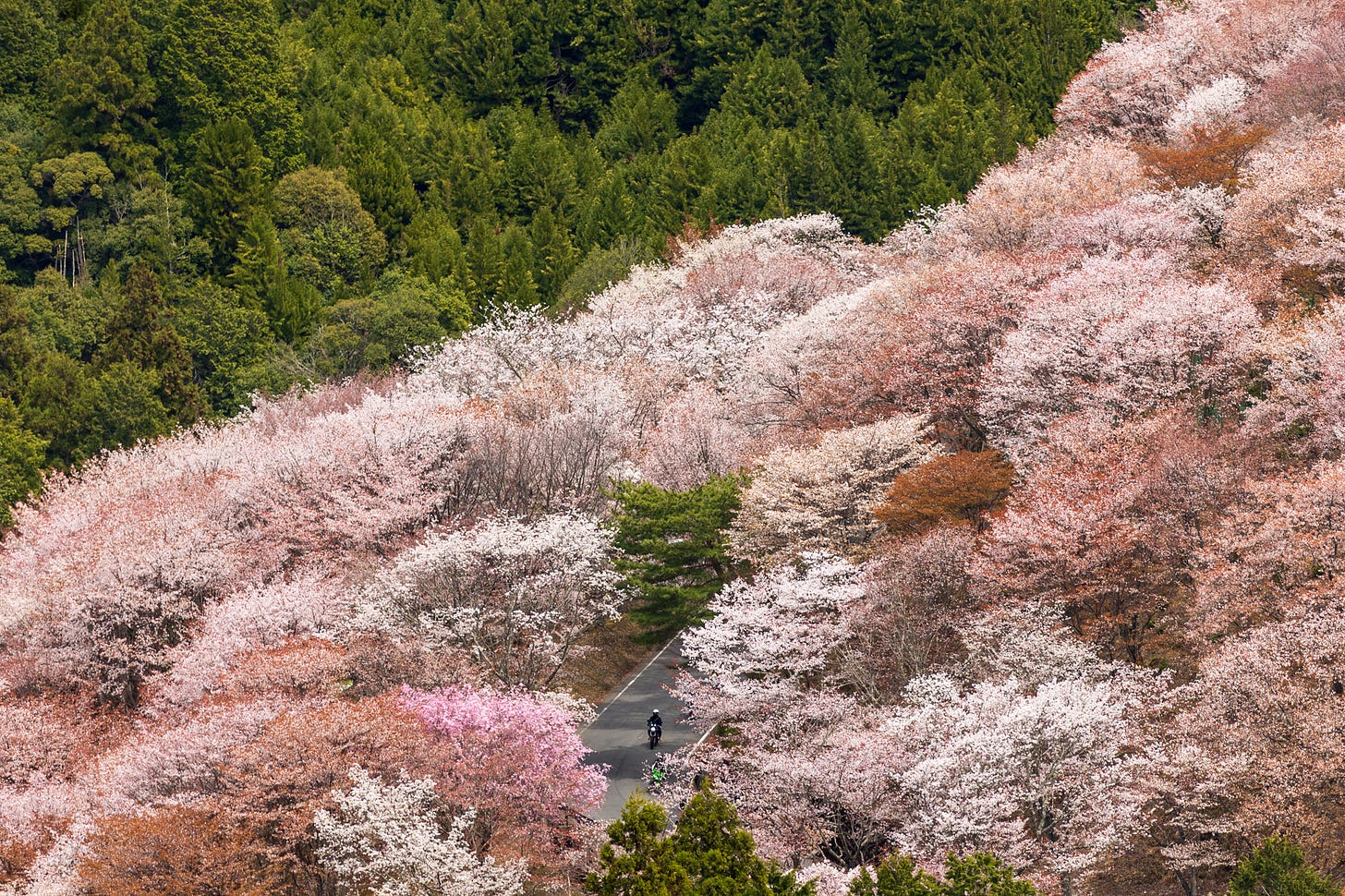
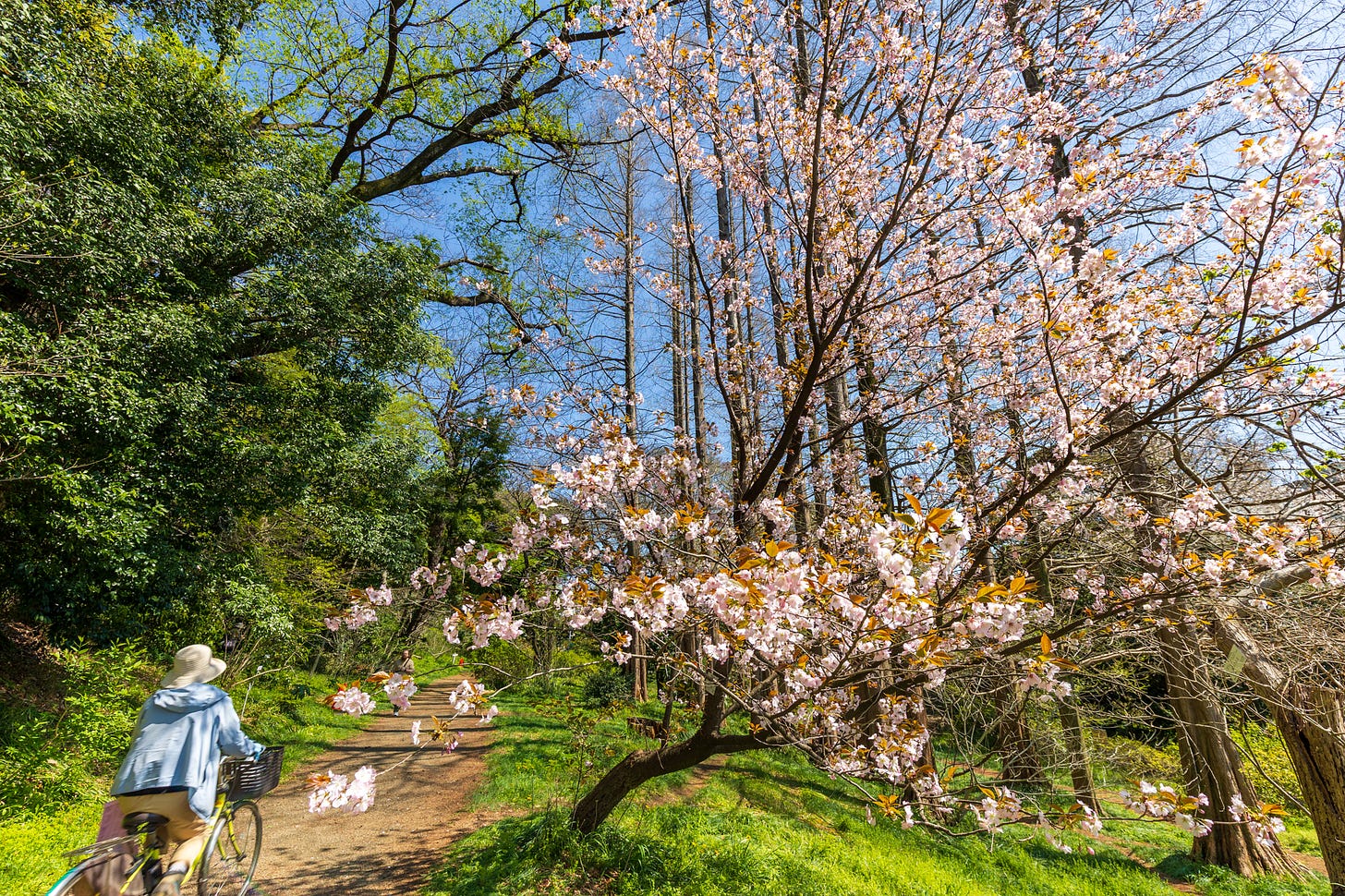
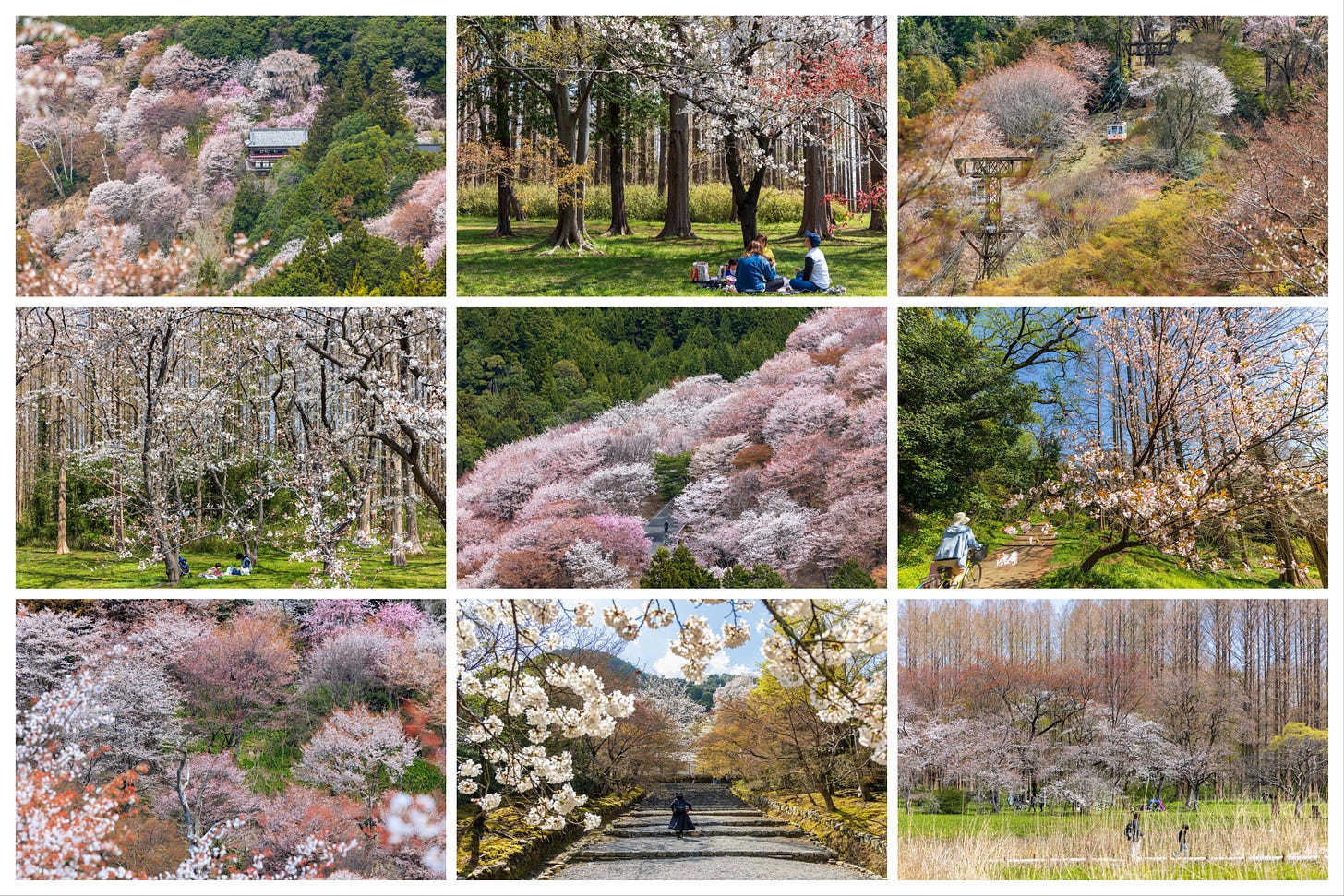
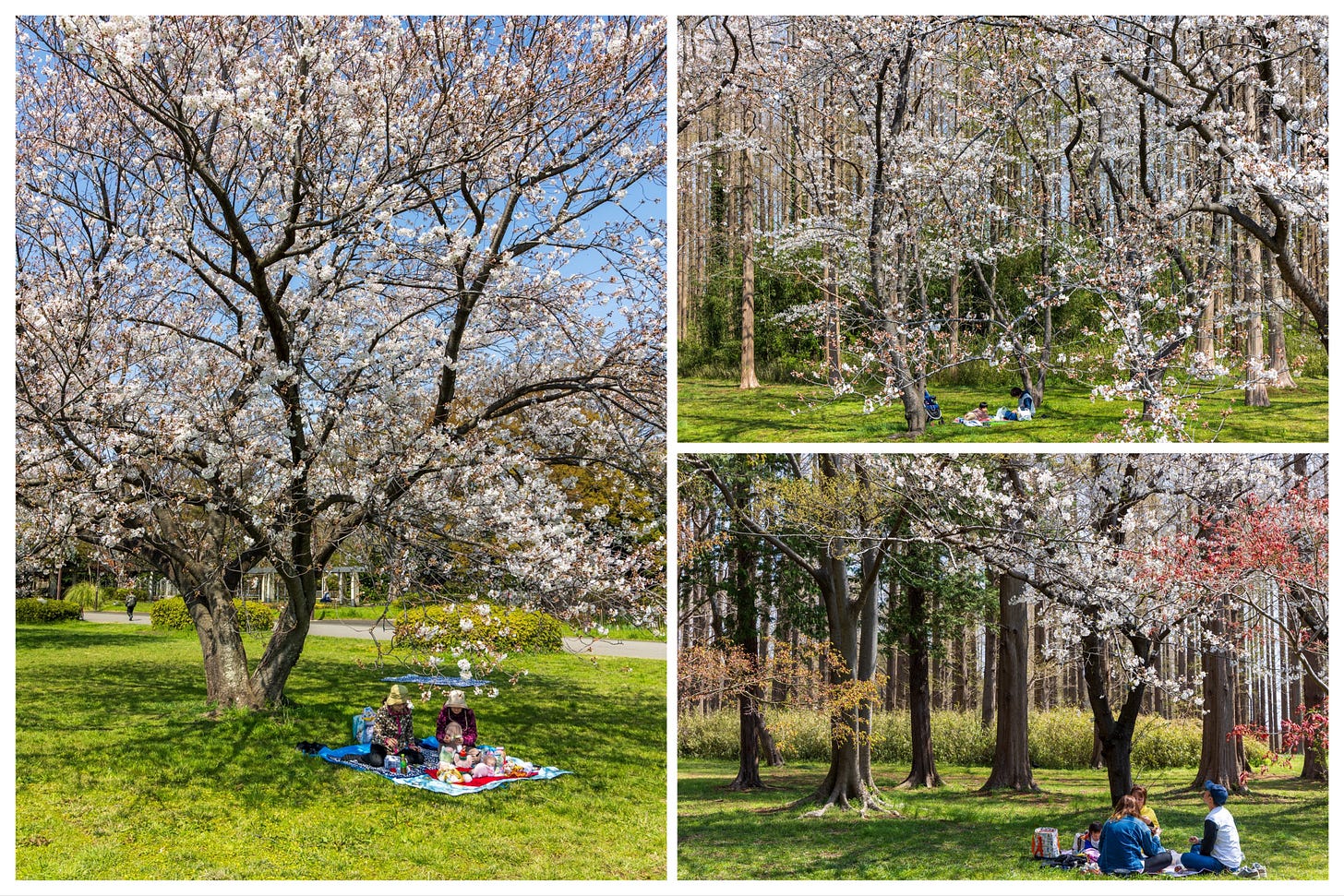

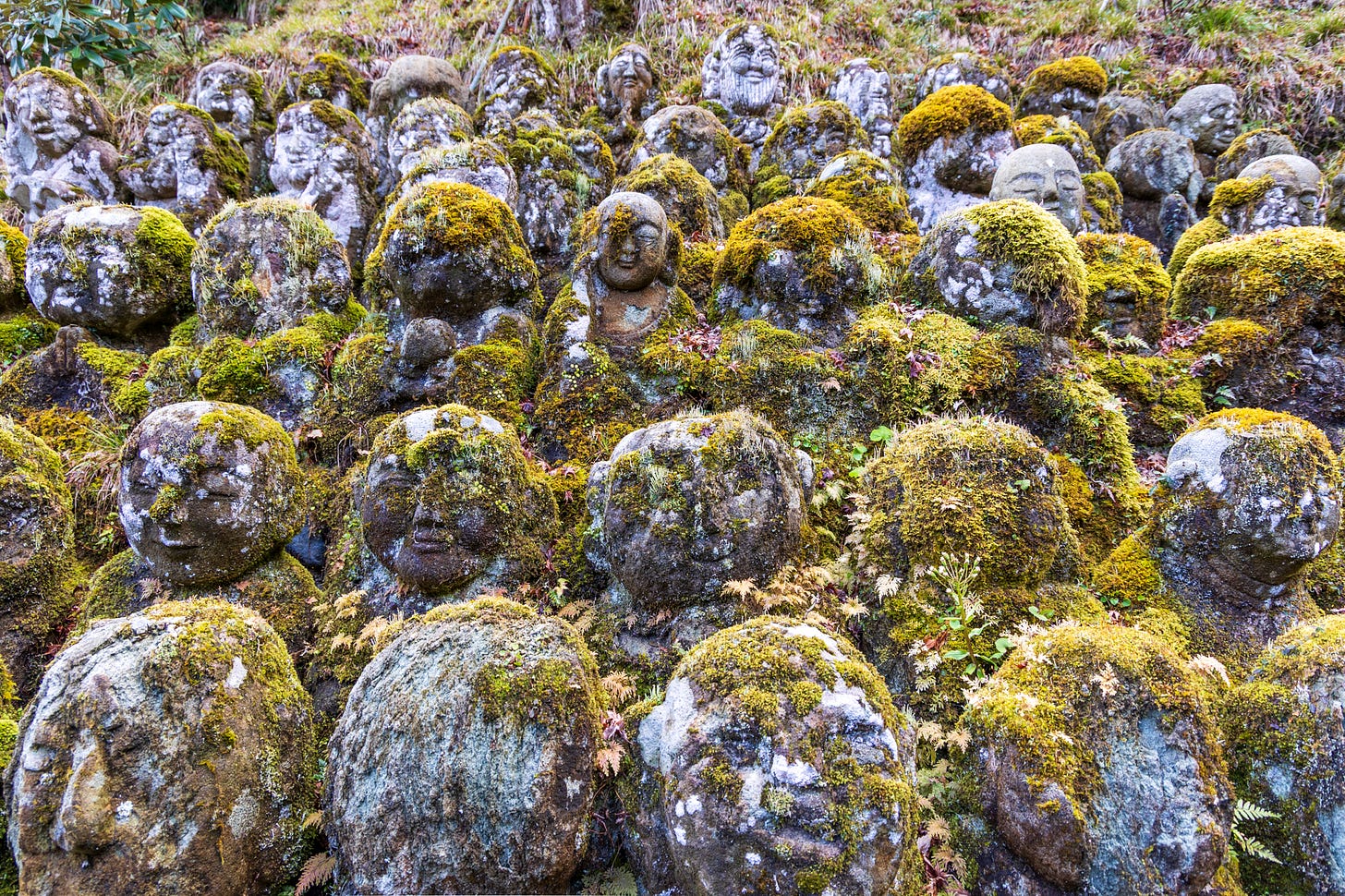
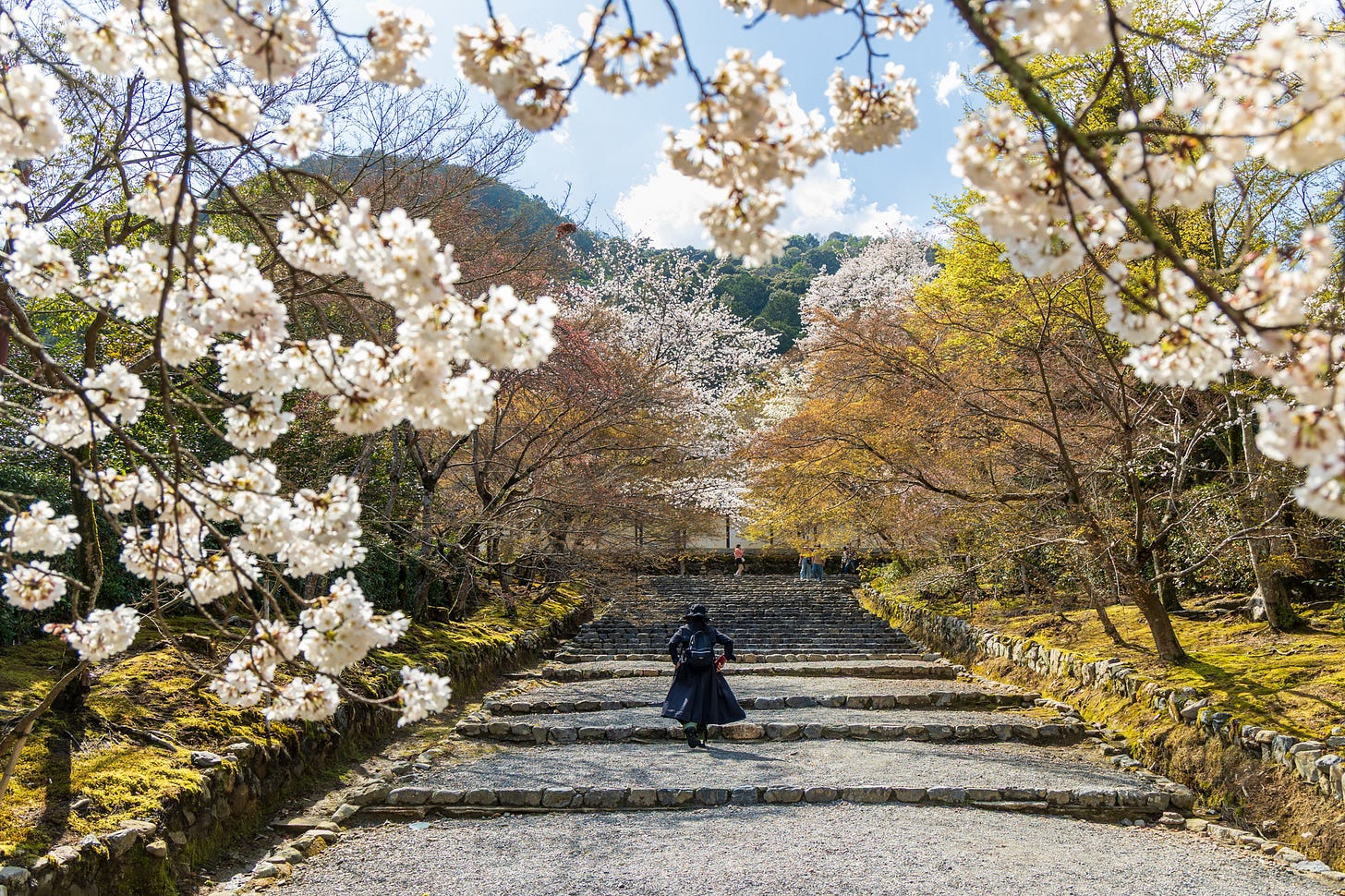





Thank you for sharing! Malaysia and Turkey have a lot in common regarding the powers-that-be. As a Malaysian living abroad, I too am reveling in the beauty of spring over here. It's the perfect season for renewed hope and optimism! :)
Stunning! Visiting Japan during Cherry Blossoms was one of my favourite trips several years back.